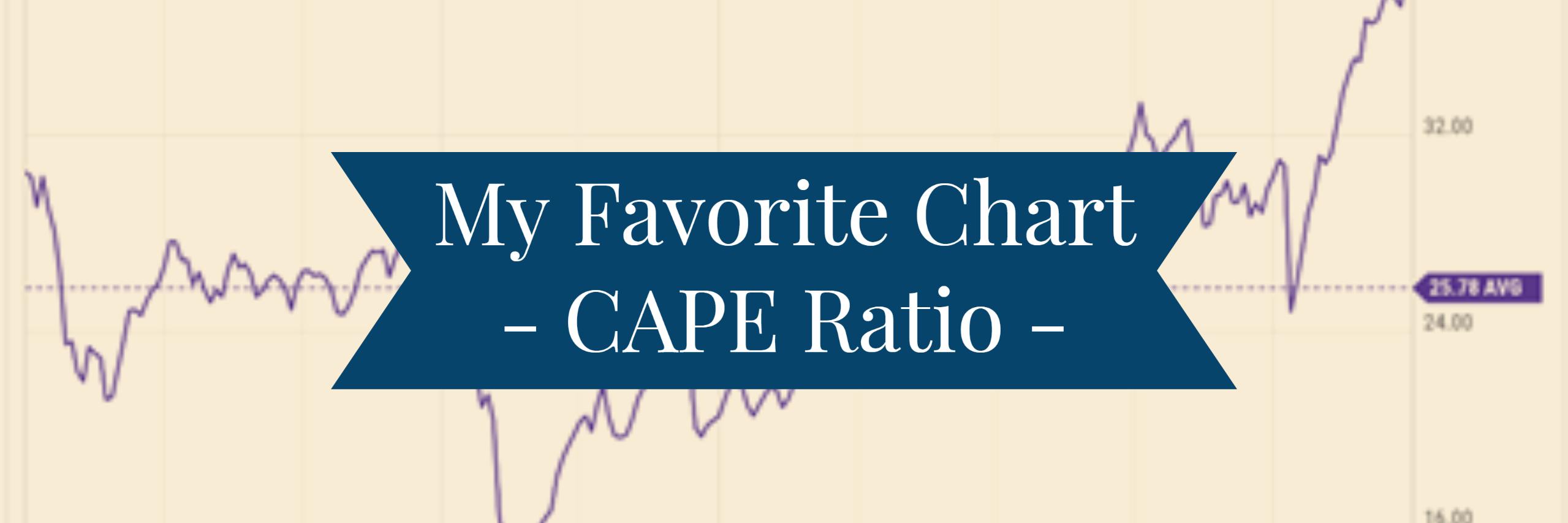
The CAPE Ratio
InvestingOne of my Favorite Charts – The CAPE Ratio

In one sentence: My favorite stock market metric is telling us that US stock prices are quite high and stock market gains will likely be much lower than average for a while.
The chart above tracks the value of the Shiller CAPE ratio (Cyclically Adjusted Price to Earnings ratio) for the last 20 years. Currently, the CAPE ratio is nearing 40 which is roughly 50% above its 20-year average.
Yale professor Robert Shiller popularized the CAPE ratio in his book Irrational Exuberance (published in March 2000). The ratio takes a simple and long-term approach by dividing today’s stock prices by their 10-year average earnings per share. Shiller’s historical research showed that high CAPE ratios were followed by lower stock market gains and low CAPE ratios were followed by higher gains. When the book came out, the CAPE ratio was in the 40s (near its all-time high) and Shiller warned that future stock gains would be disappointing. As it turned out, he was correct, as returns from 2000 to 2019 averaged -1.0% per year.
Today’s CAPE ratio is just over 38. In the past, when the CAPE ratio was in this range, we saw ten-year market gains in the 0% to 5% range. Although these numbers are not certain, I see no reason to believe that this time will be different.
While the CAPE ratio is one of the better valuation measures out there, it’s a terrible market timing signal (as are all market timing signals). I use the ratio as an indication of long-term future returns, and today’s high number leads me to: (1) have reduced expectations for stock market performance I use in client long-term spending projections, and (2) reduce stock allocations (slightly) in favor of other asset classes that have the potential to add to returns.
